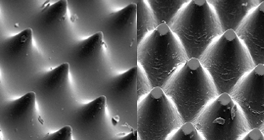Second, plastic flexible packaging commonly used substrate
The types of plastic films commonly used in flexo printing are: polyethylene (PE, including low-density polyethylene (LDPE), medium-density polyethylene (MDPE), high-density polyethylene (HDPE), linear low-density polypropylene (LLDPE)), Polypropylene (PP, including biaxially oriented polypropylene (BOPP), cast polypropylene (CPP)), polyester (PET), polyamide (PA), aluminum foil (AL), polyvinylidene chloride (PVDC), Polycarbonate (PC), ethylene vinyl acetate (EVA) film and so on. In general, after surface treatment, it is suitable for printing and compounding. Among the films used for printing, the amounts of PET, BOPP, PA, PVC, and PE are relatively large. Among the films used for the composite heat seal layer, PE and CPP are widely used; the films used for the barrier layer are generally PA, PET, PE, EVA, EVOH, aluminum foil, a variety of aluminum plating film and so on.
Third, the surface treatment of plastic film
For films such as polyvinyl chloride, cellophane, polyester, nylon, etc., due to their large surface tension, they can generally be printed directly when the printing quality is not high. The surface tension of untreated polyolefin films is generally low, and corona treatment is widely used. After corona treatment, the film should be used as soon as possible, and the surface tension of the film should be checked again before use. For the cold film, it needs to be processed by a high-power surface electronic processor. The cold film should be preheated with a tungsten halogen lamp before processing. For a single-sided printing film, only a single-sided corona treatment is required, otherwise adhesion problems may easily occur after printing. If the treatment time is too long under high temperature conditions, the ink adhesion tends to decrease. It is usually required that the OPP treatment value is greater than or equal to 38 dyne/cm, the PET treatment value is greater than or equal to 50 dyne/cm, and the PA treatment value is greater than or equal to 52 dyne/cm.

Figure 5: Digital flexo under a microscope Figure 6: Traditional flexo under a microscope
The static electricity in plastic film printing will bring a series of problems to the operation, which will directly affect the output and quality of printed products. When printing a small package of plastic film, due to electrostatic adhesion, the films are in an oxygen-deficient state, which will hinder the process of the curing of the plastic ink layer. In case of high-temperature and high-humidity environment, it is easier to form the ink layer adhesion, lighter to make the printing ink color migration, increase the difficulty of printing, cutting, finishing and other processes; when the film is adhered to each other, tearing does not open, resulting in the printing product scrapped. In addition, the bags will be continuously discharged during storage, storage, and storage, which will not only affect the heat seal but also affect the transparency of the physical and spatial levels within the bag. When a large-format film is printed, a large number of static electricity is generated, and if the machine speed is high and the antistatic agent is not incorporated in the resin, it is likely to cause a fire or an explosion. Therefore, plastic printing generally uses anti-static agent in the ink to eliminate static electricity.
Fourth, plastic film flexo ink
Solvent-based inks are generally used for non-absorbent substrates such as flexographic printing plastics. The print is dried by evaporation of the solvent in the ink. For different substrates, different inks should be used. In production, a certain amount of solvent is often added in order to adjust the viscosity and volatilization rate of the ink. When adding a solvent, a solvent with a lower surface tension should be used as much as possible to reduce the surface tension of the entire ink system, thereby improving the wettability of the plastic film. In order to solve the contradiction between the adhesion of the ink layer and the volatilization rate of the ink, a resin (rubber) corresponding to the ink or other suitable compatible adhesive resin or rubber may be added to the diluent or the ink. To a certain extent, the adhesion of the ink layer is improved.

Figure 7: Time-of-sight detection of ink viscosity using the Zahn cup during printing
(to be continued)